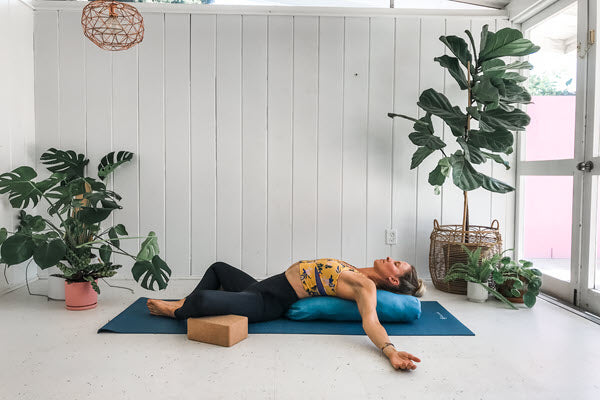10 Steps to Starting a New Habit and Creating Lasting Change in Your Life

Excerpted from The MindBody FX Lifestyle: Mastering The Mind-Body Connection For Permanent Weight Loss by Melonie Dodaro
If you want to change a habit and make an everlasting change, the first thing to do is raise your standards. Change the belief and desire you have of yourself in the area you wish to change. Write down all the things you’ll no longer accept or tolerate and all the things you want to become and achieve. What do you demand of yourself?
A habit begins with a number of beliefs that together create a strategy. If repeated often enough, the strategy becomes a habit...so how can you change a habit once it’s been formed?
It’s pointless to raise your standards and not believe you can achieve them; that’s called self-sabotage. Once you’ve raised your standards and decided on the habits you want to change, you must start to modify your limiting beliefs and remove your doubts by following this process:
1. Have a firm belief.
You need to have a firm belief, without any doubt in the achievement and success of your desires. These beliefs need to be like unquestioned commands. They’ll shape every thought, feeling and action you’ll take. Within the strength of these beliefs lies the “core” to real and everlasting change.
2. Your belief needs to be under control.
If not, no matter what you decide to change, you’ll never have the conviction to achieve your goals or the desire to truly change.
3. Create a strategy.
Once you have the beliefs that will lead to your success ingrained within you, you then need to have a strategy to achieve the results. I’ve provided the example result of getting in shape below; follow this strategy to enhance your belief in your goal.
Set your beliefs that you're in great shape and physically fit; you know what you can accomplish (such as running a marathon); and you can see yourself doing this, you can hear the applause (or whatever sound) and you have the feelings. (Don’t use the phrase “I want...” as that will result in your goal being pushed further in the future; use “I am...”).
Enhance the whole image you’ve set in your mind.
- Adjust the brightness to bring it to clarity.
- Adjust the color to enhance its brilliance.
- Adjust the size of the picture to make it life-sized.
- If it’s a still picture, make it a movie; if it’s a movie, make it a still picture. Adjust the speed of the movie until it feels the most realistic.
- If there are sounds, adjust these to make them heard in surround sound.
- Feel the feelings inside you; relishing how good it feels when you can create the body you want.
Allow your inner being to do its part in fulfilling your goal — letting change occur. After these changes have taken place and been performed repetitively, a new pattern will develop that will create the habitual change within you.
Determine what has to happen for you to know that you’ve made the desired changes in your life. What would be the final step? Would it be that you can fit in a dress that you purposely bought for a special day? Would it be that people comment on the "new" you? You'll need to write down this final step as your evidence step.
4. Choose steps.
Choose several steps you can take each day that will assist you on your journey toward the new you, to make this new pattern ingrained into your subconscious mind and ultimately creating new habits. For the exercise example, your steps might include:
- Set the alarm clock 45 minutes early.
- Have workout clothes laid out the night before, for easy accessibility.
- Take the dog on your walk; you’ll get companionship and the dog will benefit from the exercise, too.
- Have a healthy lunch prepared the night before.
- Stock your fridge with healthy snacks you can grab quickly when you’re hungry.
- Plan all your meals in advance.
- Schedule exercise, meals, and other healthy activities into your day planner or PDA.
5. Be very specific.
Write down a date when you’ll start this new strategy and how often you'll do it. Choose the route you'll take in the neighborhood or which gym you’ll visit. State exactly in the present tense what you’re doing, as in, “I’m walking three miles today and will do so on Monday, Wednesday and Friday each week.” This is much better than simply saying, “I will exercise each week.” Being specific implies a commitment to your goal.
6. Make a commitment to start.
Think about what’s at stake and focus again on the list you made, thinking about how it’ll feel and what benefits you'll receive when you incorporate this strategic change into your life. We’ve all had the experience of wanting to start an exercise program “next week”; when next week comes and goes, we just put things off, and it never happens. Make the commitment to begin — and follow through.
7. Thank yourself for participating.
It’s OK to be grateful to yourself; this is a wonderful affirmation. Hearing the words "thank you" relaxes the muscles and deepens the resolve. If someone, anyone, thank you for something, it naturally makes you feel good. You want to keep doing it to get that praise again, so praise yourself. Soon others will see the positive changes in your life and praise you, too.
8. Notice when you don’t follow through.
Ask yourself why, but be careful not to beat up yourself over a lapse. Do you need to alter the motivation or the steps to your new strategy? Was there something that created some doubt in your mind? If so, change it back. The results you get are the product of your thinking, so if you continue to be disappointed at what you achieve, you must be willing to ask yourself some hard questions and change your beliefs.
9. Use your affirmations.
Often people will take the affirmations they’ve created and make an audio recording of them that can be played back each morning as they exercise. This is a great way to start the day on a positive and upbeat note while encouraging yourself to commit to your new habit.
10. Journal your progress.
This is very important. Journaling is a way to keep track of how far you’ve come and how much you’ve accomplished, which can sometimes be difficult for you to remember. Journaling can be as simple as a brief paragraph noting what days you performed a certain habit or task and what the outcome was. You can also use a journal to record specifics of your diet and exercise regime as well as how you’re feeling as a whole and any emotional events that are occurring. It's important to do this daily. The more specific you are with your journaling, the better reference tool it will become.
Also in Blog

Body Peace & Personal Empowerment

Yoga for Swimmers: Poses for Strength and Mobility

